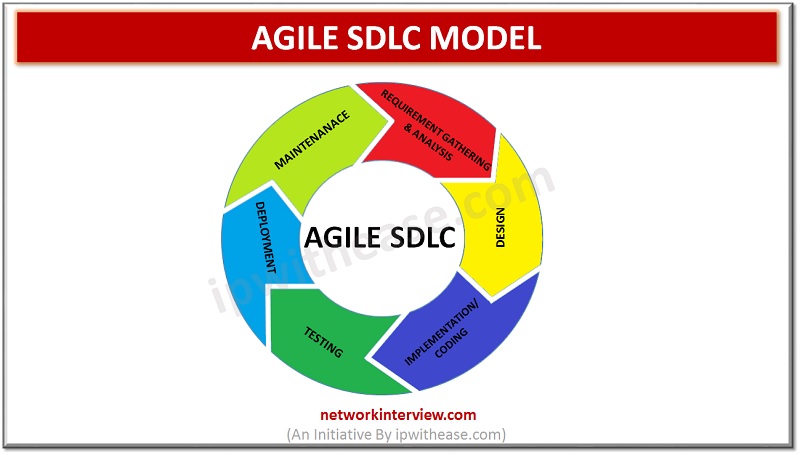
What is Agile SDLC? – Complete explanation of Agile SDLC Model
Introduction
We use hundreds of software daily; have you ever wondered how they create software? There are various methods of Software Developments. Today in this article, you will get a basic understanding of the Agile SDLC method and its pros and cons.
To understand it, first, you should answer the question – what is SDLC?
What is SDLC?
SDLC is the short form of the Software Development Life Cycle. It is a framework that defines the phases or different steps involved in Software Development. It covers all the tasks starting from inception to retirement and ensures a smooth workflow. The main aim of the SDLC is to deliver a high-quality software solution for the customer’s requirements.
Phases of SDLC
SDLC covers the following six phases as below,
- Requirement Gathering and Analysis
In this phase, the customer’s needs and the software’s purpose are collected from the customers by a meeting. Once the information is collected, the business analyst and product manager check the feasibility and other essentials to develop the software. All this information contributes to creating an SRS (Software Requirement Specification) document.
- Design
Using the information in the SRS document, the Architect develops the complete design of the software. The design is a blueprint that explains the operation, specifications, and infrastructure clearly.
- Implementation/Coding
Based on the design, the developers or programmers will create the software. In this phase, the coders translate the Design into Source Code.
- Testing
Once the coding is done, the software goes through testing. The developers check all the operations and make sure the software is as per the SRS document i.e., customer expectation. If any defect or vulnerabilities are found they are rectified and send to retesting.
- Deployment
After successful testing, the software is tested in the production environment or replicas of it, to attain User Acceptance. If the customer is satisfied with the software then the deal is signed off.
- Maintenance
The Software development cycle doesn’t end once the deal is signed. It involves maintenance i.e., if any issues are found after the sign-off, they should be fixed and enhanced by the developers.
What is Agile SDLC?
Agile SDLC is the method of Software development involving continuous iterative and incremental process which focuses on the final customer satisfaction. It involves continual planning and learning, team collaboration, evolutionary development, flexibility to change, and quick delivery.
Agile SDLC is an effective and simplest method of SDLC. The agile method focuses more on flexibility during the development process rather than final customer requirements.
How Agile SDLC works/done?
In Agile Module, the project manager separates the whole development process or software codes into small incremental builds called Build boxes or sprints. Instead of developing the full software in one go, the developers code each sprint separately.
Each sprint will go through the first 4 phases of SDLC iteratively. Each of them may last for 2 -4 weeks. In the end, the product is handed to the customer. The customer feedback will be used to enhance the software in the sprint. The first sprint will be the fundamental or input for the next one.
As testing is done in each phase, there is a low risk of error, and it also makes the process flexible to change. At the end of the final incremental block, the software is put into deployment for user acceptance.
Advantages of Agile SDLC method:
- The new feature that is not mentioned in the SRS can be added easily during the development process.
- It is more flexible and adaptable to the changes.
- As Customer Satisfaction is gathered in every stage, the probability of job success or accomplishment is high.
- It reduces the risk of software development.
- The customer is updated regularly about the process thus he can oversee the whole process.
- Quick-release of first and following versions
Disadvantages of Agile SDLC Method:
- The development team should be professional and need more resources than the traditional method.
- Due to frequent changes, the process may exceed the estimated time and cost.
- If the customer is not clear about what he needs, then it will lead to the failure of the project
Despite the demerits, Agile SDLC is widely accepted in the Software world recently.
Continue Reading:
Introduction to Agile Methodology
Difference between Agile and Devops



